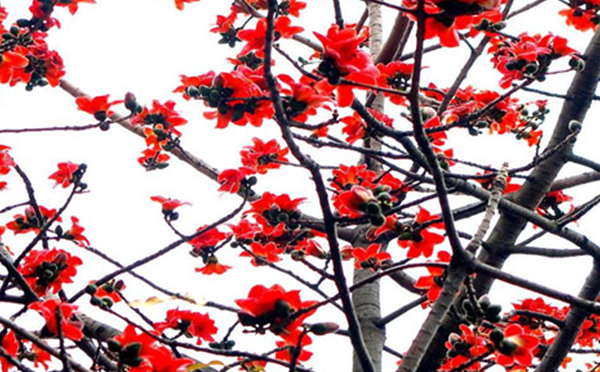‘Hero’ Trees
Posted on : July 28, 2019Author : AGA Admin

‘Hero’ Trees
In late spring each year flakes of silky white clouds turn Hong Kong Park into a little Narnia. The annual springtime ‘snowfall’ in a country that actually experiences no snow, is credited to Hong Kong’s Hero trees, scientifically known as Bombax ceiba, in Cantonese as muk min (木棉), and most commonly in English as cotton trees. They flower every February and March before the fruiting period in April and May. The Bombacaceae family, allied to the mallow family Malvaceae to which the cotton tree belongs, has 27 genera and 180 species around the world, of which one genus and three species are endemic in China. They are widespread in tropical Southeast Asia and originated in India. Tree Cotton is also called “Hero Trees” in Chinese. The stunning annual flamboyance and vernal snowflakes of cotton trees have been widely captured and adored in Chinese literature. Quan Tangshi (the largest collection of Tang poetry published in 1705, containing some 49,000 lyric poems) associates its blushing flowers and branches with an elegant feminine figure. But to be dubbed a ‘hero’ tree requires more–a deed of courage – and a myth. It earned its name from a legendary figure of the Kra–Dai-speaking Lizu people, one of the 56 ethnic groups indigenous to Hainan Island in southern China and legend goes that once Jibei (吉貝), a wise and courageous general of the Lizu people was betrayed by one of his followers during an attack by other ethnic groups. The fearless Jibei refused to surrender and died succumbing to multiple arrows on a mountain top. Chinese believed that he turned into a cotton tree with a stout trunk and his blood transformed into bright scarlet flowers. To commemorate him, the Lizu people gave the tree the suggestive name Hero tree or Jibei tree.
In Chinese culture, this mighty image of the thick, towering and rigid hero tree symbolizes a person’s or the nation’s invincible spirit. In 1928, modern Chinese poet Guo Moruo — who briefly lived in Hong Kong in 1947 — wrote an article entitled “Hero Trees” (英雄樹) to stir up a new wave of revolutionary writing that attacked the bourgeoisie’s influence on literature. Another example is the more recent poem “To the Oak Tree” (1977) by Fujian poet Shu Ting, in which she compares herself to a sturdy cotton tree that guards a nearby oak tree, thus interpreting strength, loyalty and independence to be the basics of love in modern times.




